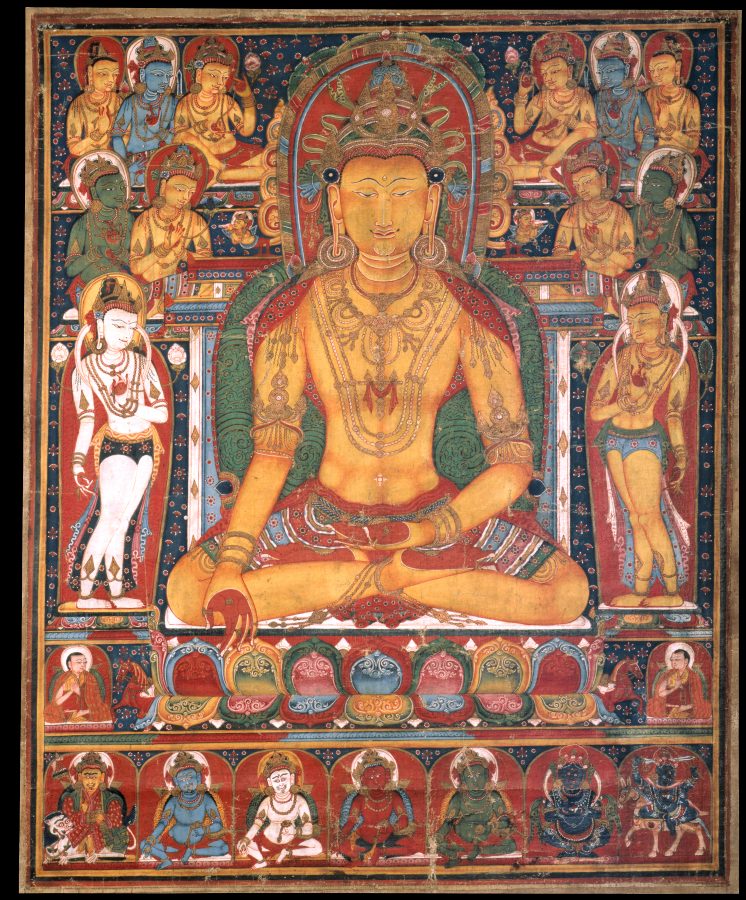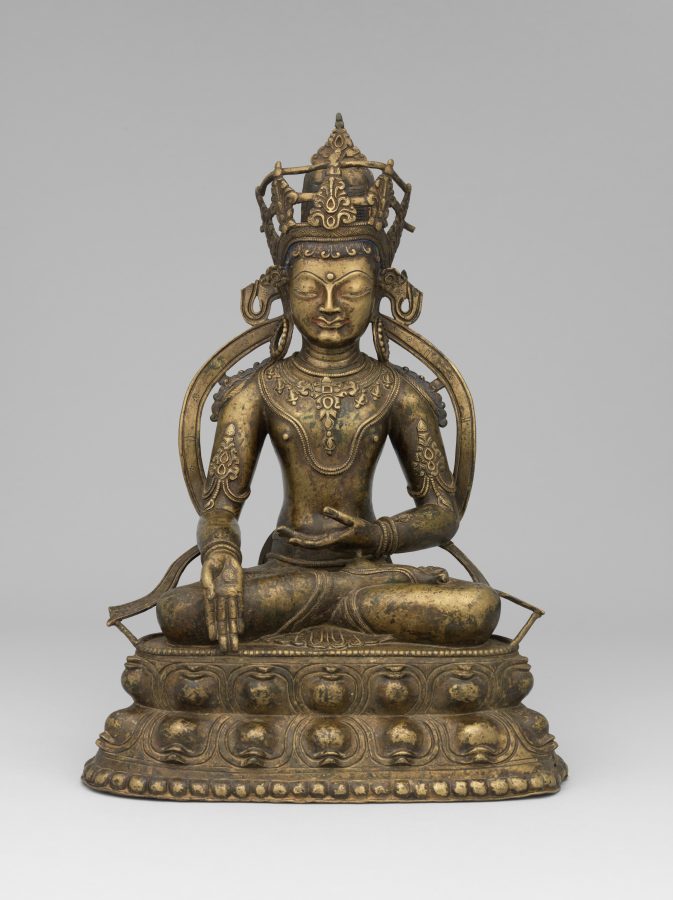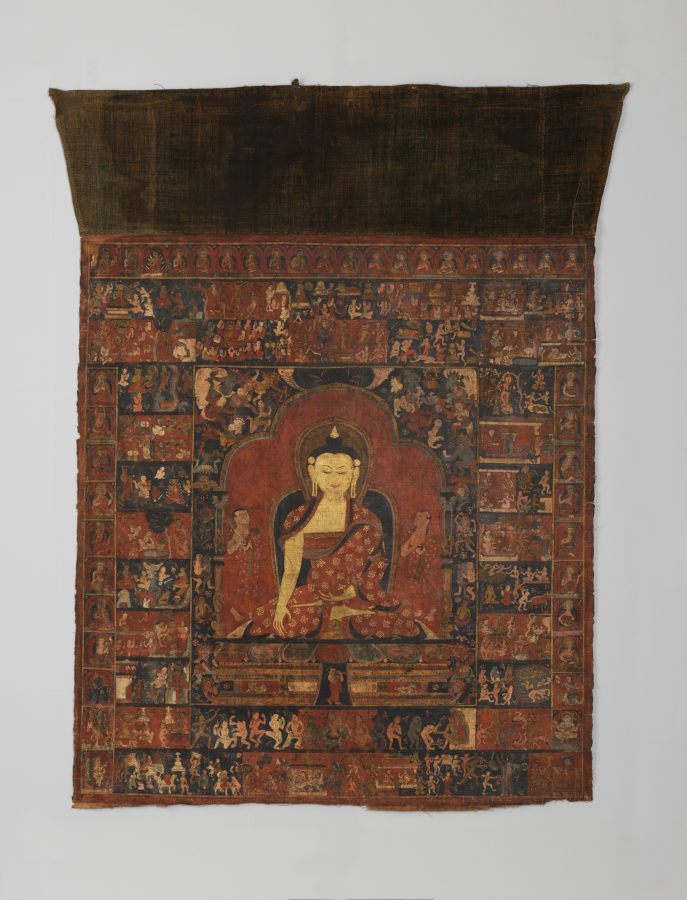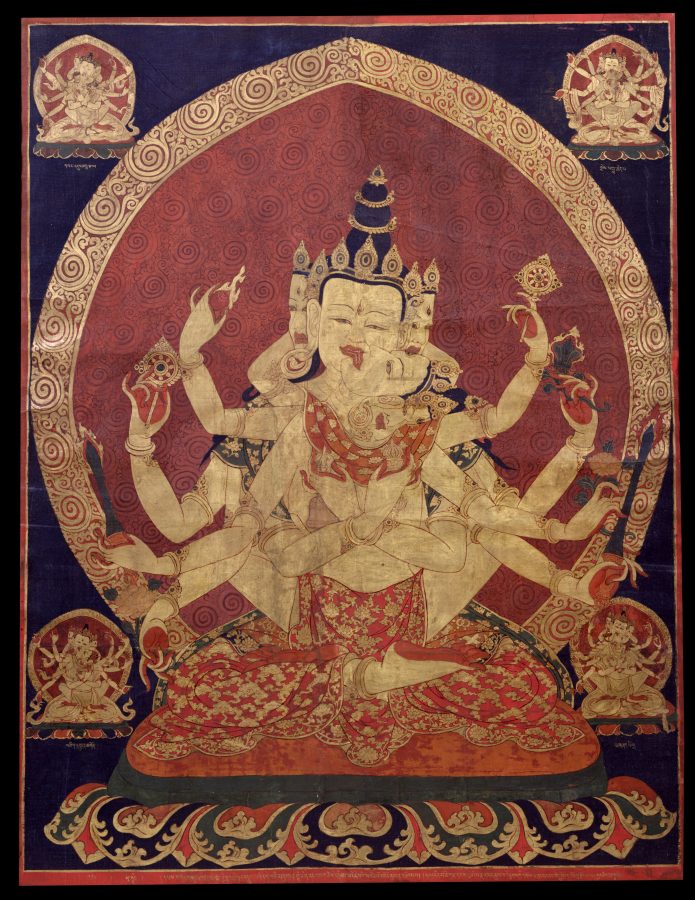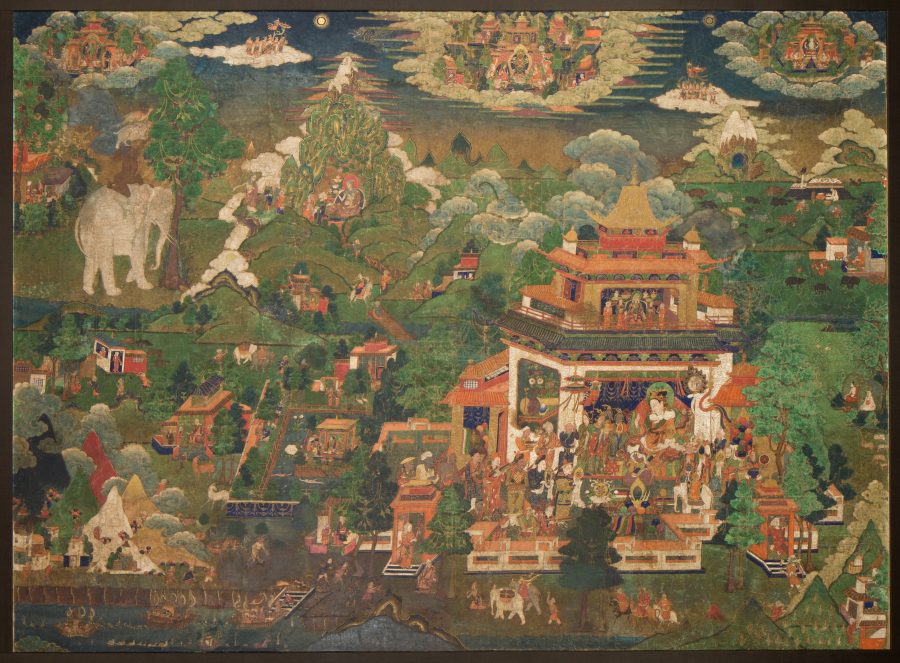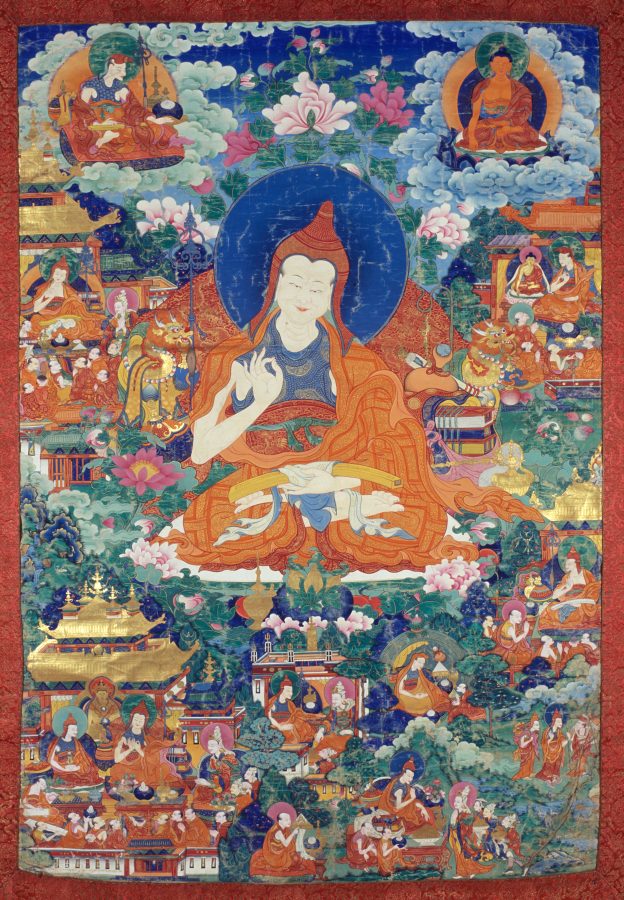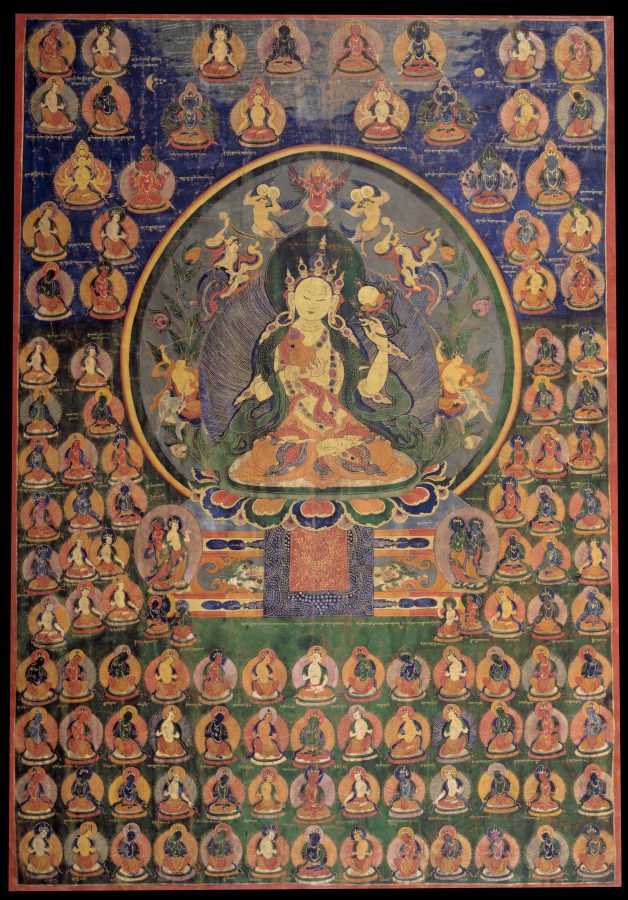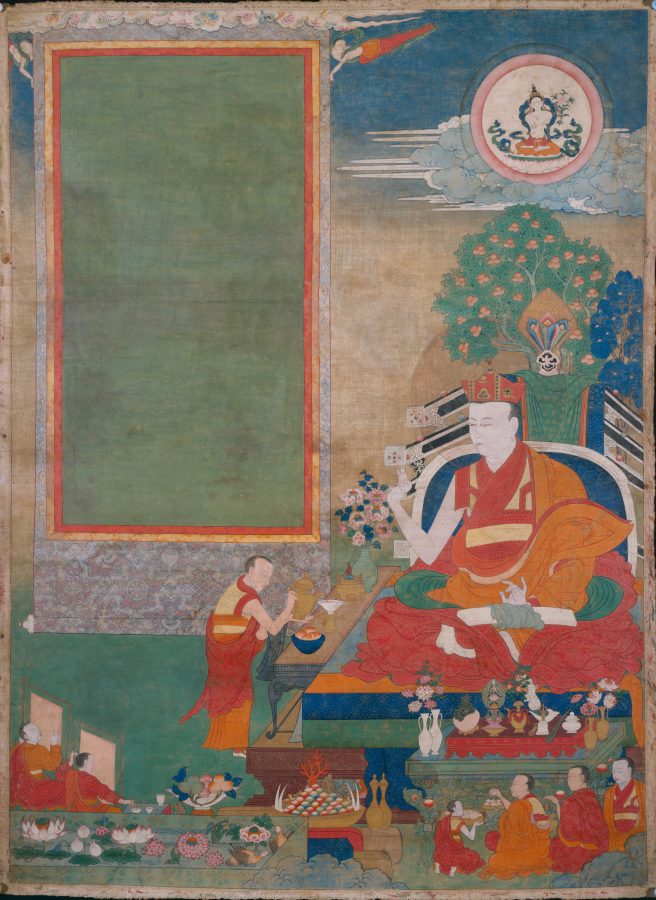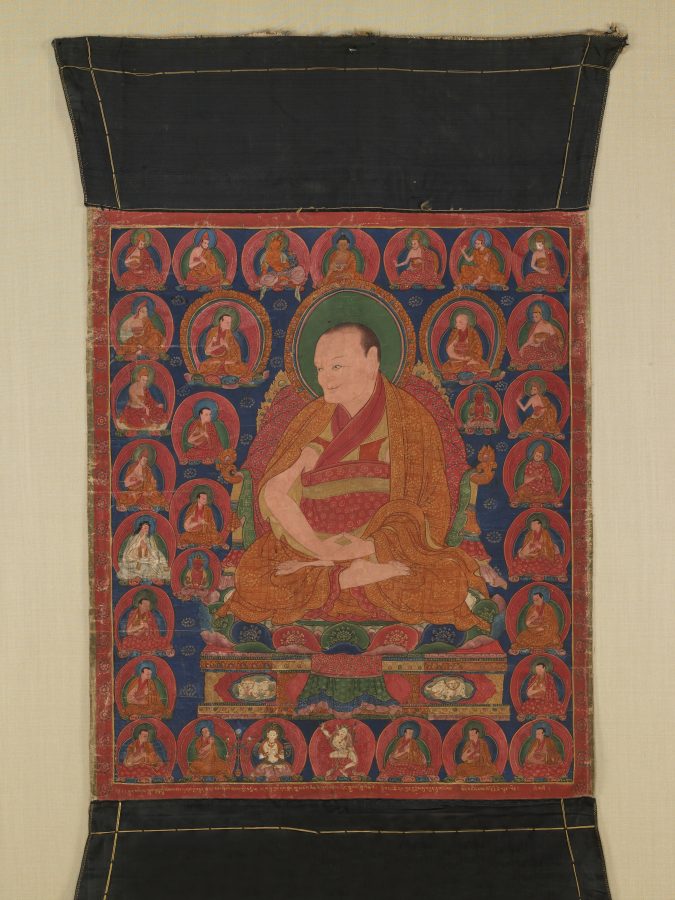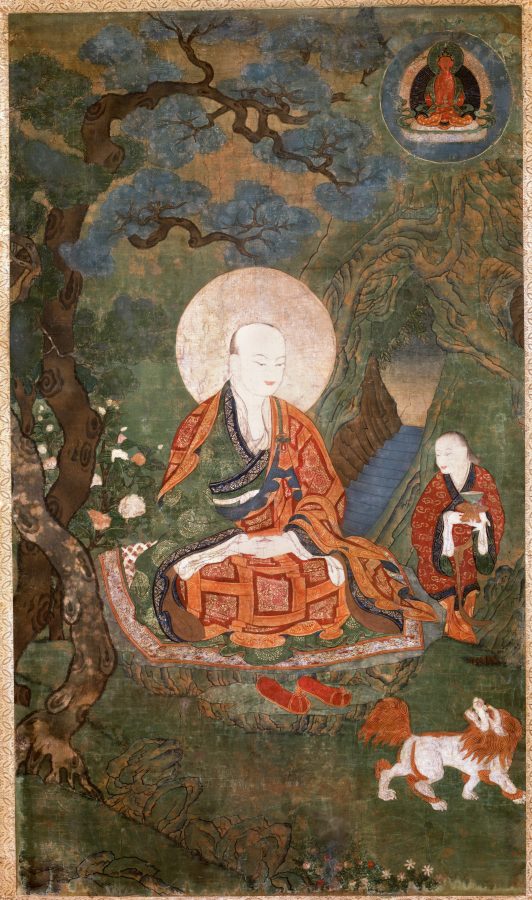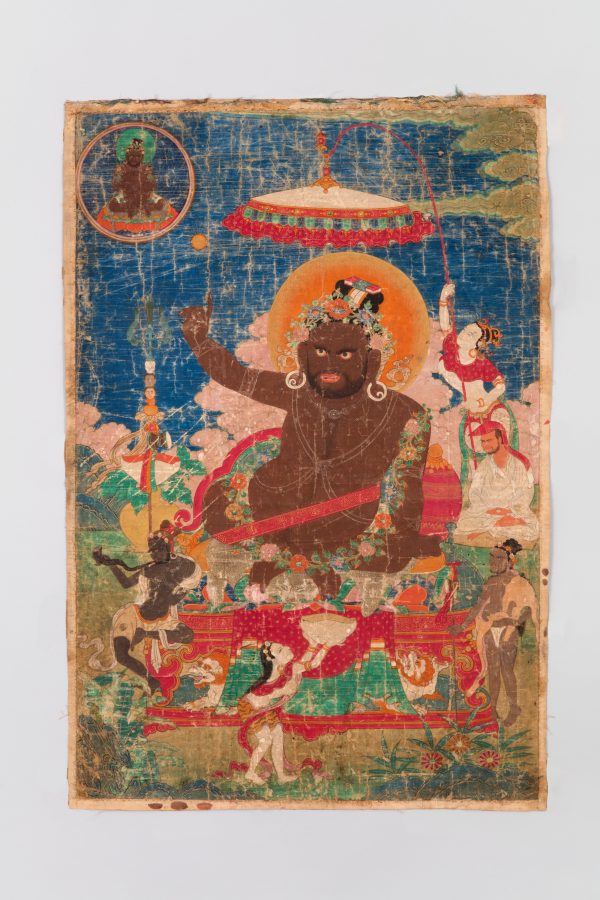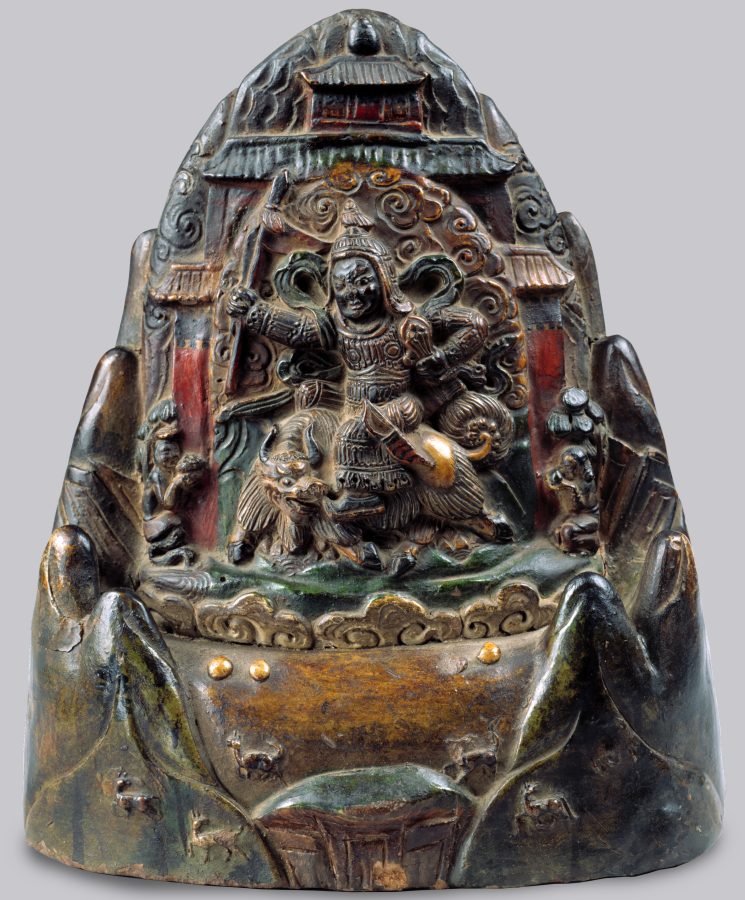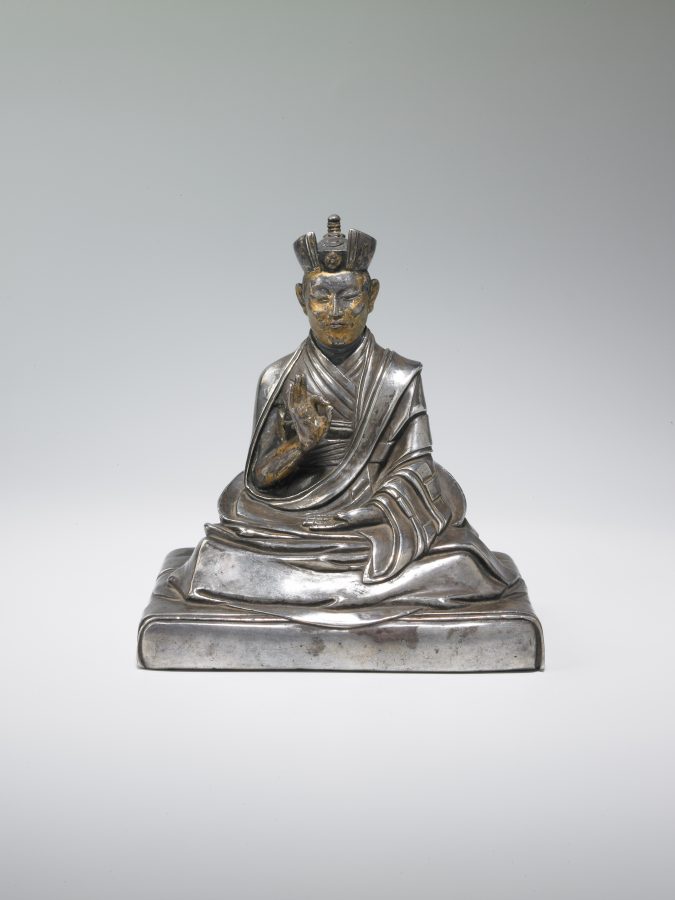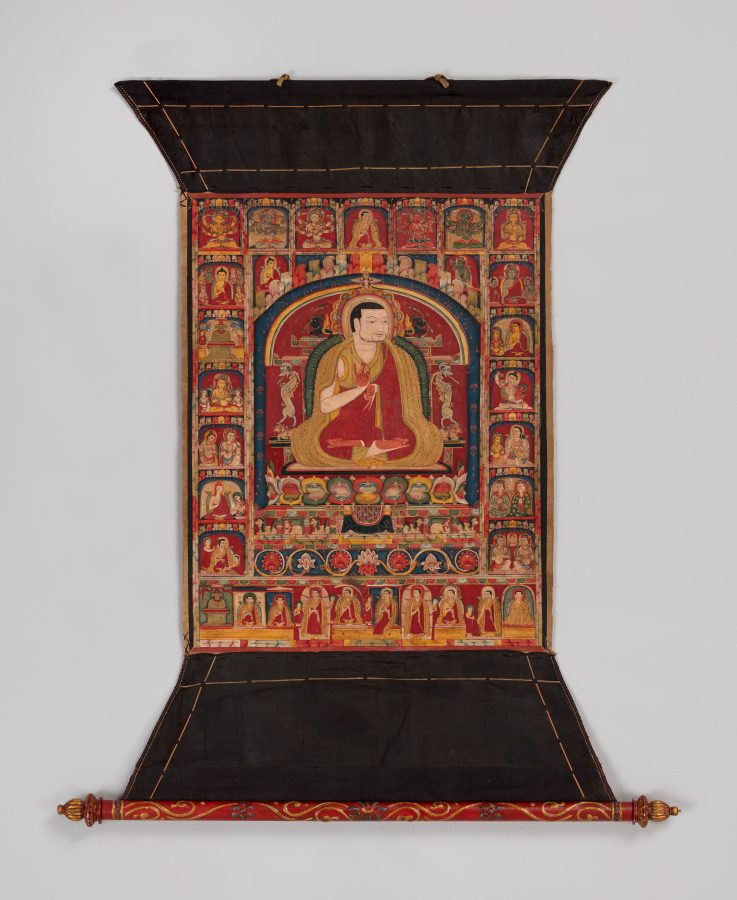Rubin Museum of Himalayan Art, From the Collection of Mr. and Mrs. Walter Warren Wilds
C2007.22.1
The Indian scholar Shantarakshita was an important figure in establishing Buddhism in Tibet in the eighth century. While the legendary founding saint and wizard Padmasambhava (see silver sculpture in adjacent case) represented the tantric and magical, Shantarakshita represented the monastic and scholastic.
This painting shows Shantarakshita surrounded by scenes from his life. The story of Buddhism’s arrival in Tibet begins in the bottom-right corner, where Shatarakshita is shown traveling to Tibet laden with bags full of books. At the lower left Shantarakshita sits next to Padmasambhava and performs a consecration ceremony at Samye, Tibet’s first monastery, and ordains the first Tibetan monks. On the back of the painting an aspirational dedication wishes for the essence of the Gradual Path (Lam Rim) to enlightenment, which Shantarakshita embodies, to be permanently preserved in this painting.
This work of art represents later developments in the Menri painting tradition in Central Tibet, with rich palettes, dense lively compositions, highly decorative ornamentation, and dramatic landscapes.
See full collection record
Learn more about the Jokhang Temple, which is depicted in this painting, and the establishment of Buddhism in Tibet
Learn more about lineage paintings and the New Menri painting tradition


